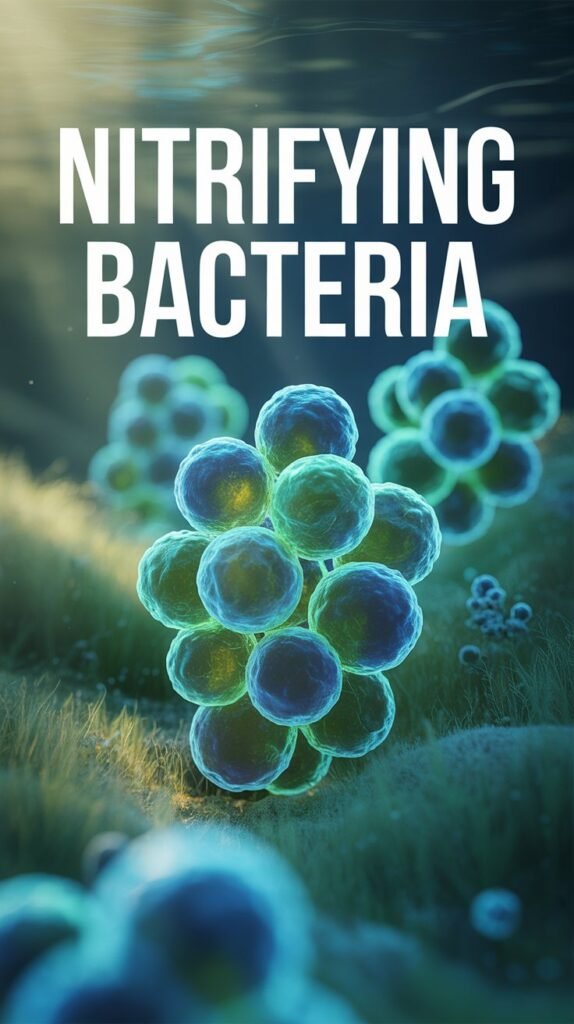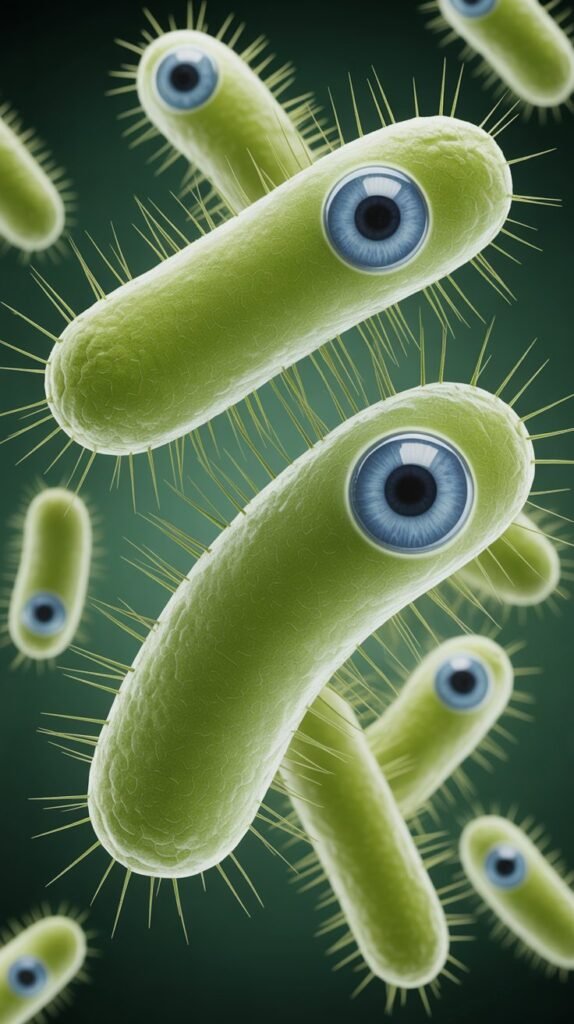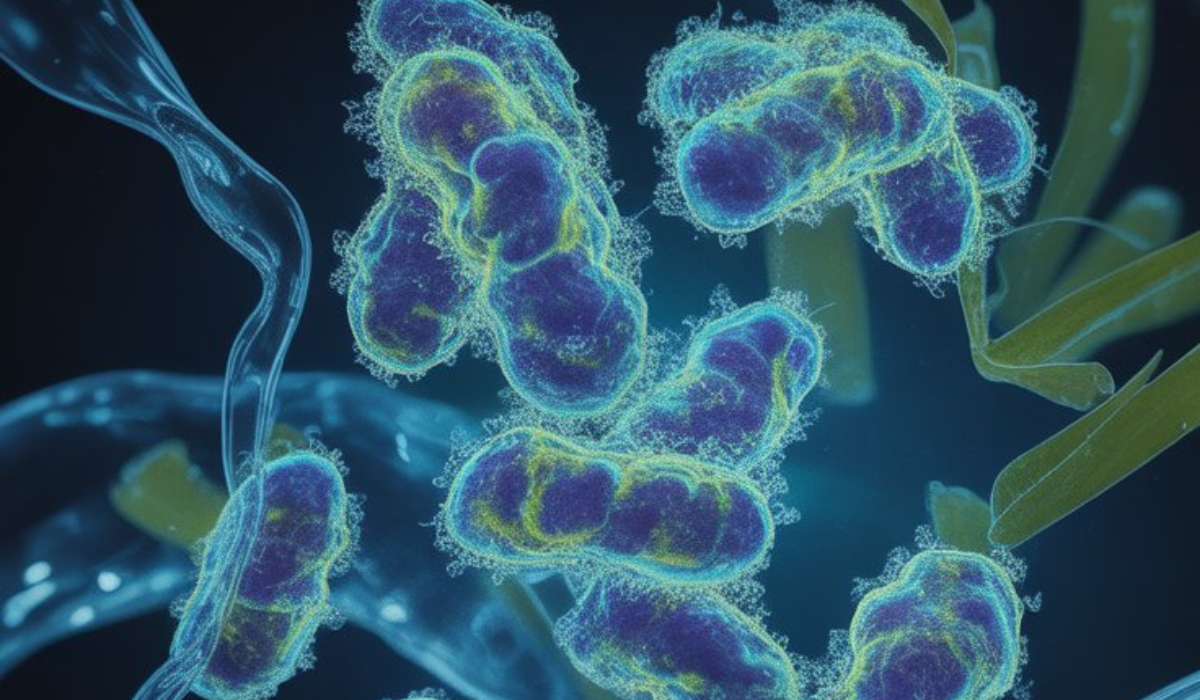When it comes to building a stable and thriving aquarium, few things are as important as nitrifying bacteria. These microscopic organisms silently maintain water quality, protect fish from deadly toxins, and ensure the long-term success of both freshwater and saltwater tanks. Whether you’re a beginner or an experienced aquarist, understanding nitrifying bacteria is crucial for mastering aquarium biology.
In this long-form guide, we explore what nitrifying bacteria are, why they are essential, how they function in the nitrogen cycle, and how to grow, maintain, and boost their population for a balanced aquatic environment.
What Are Nitrifying Bacteria?
Nitrifying bacteria are beneficial microorganisms responsible for converting toxic ammonia (NH₃) into less harmful nitrate (NO₃⁻). They are key players in the aquarium nitrogen cycle, making them essential for every aquatic system. These bacteria colonize surfaces such as filter media, gravel, rocks, driftwood, and even aquarium glass.
They perform nitrification, which occurs in two main steps:
- Ammonia Oxidation – Done by ammonia-oxidizing bacteria (AOB) like Nitrosomonas.
- Nitrite Oxidation – Performed by nitrite-oxidizing bacteria (NOB) like Nitrobacter or Nitrospira.
Without nitrifying bacteria, aquariums would quickly accumulate toxic waste, leading to stressed, sick, and dying fish.
Why Are Nitrifying Bacteria Important?

1. They Prevent Ammonia Poisoning
Fish release ammonia through gills, urine, and waste. Uneaten food and decaying plants also contribute to rising ammonia levels. Ammonia is highly toxic to fish even at low concentrations.
Nitrifying bacteria convert this ammonia into nitrite and finally into nitrate, which is far less harmful and can be controlled with water changes.
2. They Ensure Biological Stability
A well-established bacterial colony creates a stable biological environment, allowing fish, shrimp, and live plants to thrive.
3. They Support Heavy Bioloads
More bacteria means your tank can safely support more fish without sudden spikes in ammonia or nitrite.
4. They Reduce Stress in Fish
Stable water parameters created by nitrifying bacteria mean less stress, fewer diseases, and increased lifespan.
5. They Are Essential for Long-Term Success
No aquarium can function successfully without nitrifying bacteria. They are the backbone of all successful fishkeeping.
Types of Nitrifying Bacteria in Aquariums
Understanding the different groups helps you see how each contributes to the nitrogen cycle.
1. Ammonia-Oxidizing Bacteria (AOB)
These bacteria convert ammonia into nitrite (NO₂⁻). Common genera include:
- Nitrosomonas
- Nitrosococcus
- Nitrosolobus
2. Nitrite-Oxidizing Bacteria (NOB)
They convert nitrite into nitrate (NO₃⁻). Common genera include:
- Nitrobacter
- Nitrospina
- Nitrospira (currently believed to be the dominant species in aquariums)
3. Archaea (Ammonia-Oxidizing Archaea)
Recent studies show that certain archaea also play a role in nitrification, especially in low-ammonia environments like planted tanks.
How Nitrifying Bacteria Work: The Nitrogen Cycle
To understand how these bacteria function, you need to know how the nitrogen cycle works.
Step 1: Ammonia Production
- Fish waste
- Decaying plants
- Uneaten food
- Dead organisms
All release ammonia.
Step 2: Ammonia → Nitrite
AOB (Nitrosomonas) convert ammonia to nitrite.
Step 3: Nitrite → Nitrate
NOB (Nitrobacter, Nitrospira) convert nitrite to nitrate.
Step 4: Nitrate Removal
Nitrate is removed by:
- Water changes
- Live plants (consume nitrate as fertilizer)
- Denitrifying bacteria (in anaerobic zones)
This cycle runs continuously in a mature aquarium.
Where Do Nitrifying Bacteria Live in an Aquarium?

These bacteria do NOT freely swim in water. Instead, they attach to surfaces with high oxygen levels, such as:
1. Filter Media (Most Important Area)
Sponges, ceramic rings, bio balls, and foam provide oxygen-rich surfaces ideal for colonization.
2. Substrate
Sand and gravel hold large bacterial colonies.
3. Rocks and Hardscape
Porous rocks like lava rock support massive bacterial populations.
4. Driftwood
Textured surfaces encourage bacterial attachment.
5. Plant Roots
Live plants create microhabitats for bacteria.
The more surface area your tank has, the larger your bacterial biofilter will be.
How to Increase Nitrifying Bacteria in Your Aquarium
1. Use High-Quality Bio Media
Ceramic rings, sintered glass, and bio balls offer maximum surface area.
2. Provide Strong Aeration
Nitrifying bacteria need oxygen. Use:
- Air stones
- High flow filters
- Surface agitation
3. Avoid Overcleaning
Washing filter media with tap water kills bacteria due to chlorine.
Always rinse in old tank water.
4. Keep a Stable Temperature
Ideal range: 22°C–30°C (72°F–86°F).
5. Do Not Overuse Chemicals
Medication, bleach, or chlorinated water can wipe out bacterial colonies.
6. Use Live Plants
Fast-growing plants absorb ammonia and nitrate, helping the bacterial colony stabilize.
7. Seed With Established Media
Add filter media or substrate from a mature tank to quickly boost bacterial populations.
What Kills Nitrifying Bacteria?
Several factors can harm or destroy beneficial bacteria:
1. Chlorinated Water
Chlorine and chloramine kill bacteria instantly.
2. Sudden Temperature Changes
A drastic drop or rise slows reproduction or kills colonies.
3. Lack of Oxygen
Because nitrifying bacteria are aerobic, reduced oxygen supply can be deadly.
4. Chemicals and Medications
Copper-based medications, antibiotics, and algaecides disrupt bacterial activity.
5. Overcleaning Filter Media
Washing filters with tap water removes bacterial populations.
6. Removing Too Much Substrate
Deep cleaning or replacing substrate can disrupt bacterial colonies.
How Long Does It Take Nitrifying Bacteria to Grow?
Growth depends on conditions:
New Aquarium
- 4 to 8 weeks to build a stable population.
With Beneficial Bacteria Supplements
- 1 to 3 weeks.
With Seeded Media
- 24 to 72 hours to establish activity.
Patience is key when cycling a new aquarium.
Signs of Healthy Nitrifying Bacteria

A thriving bacterial colony shows these indicators:
- Ammonia: 0 ppm
- Nitrite: 0 ppm
- Nitrate: 5–40 ppm
- Clear water
- Stable pH
- Happy, active fish
If nitrates gradually rise over time, your biofilter is working.
Signs of Weak or Dying Bacteria
Watch for:
- Ammonia spike
- Nitrite spike
- Cloudy water (bacterial bloom)
- Fish gasping at the surface
- Sluggish filter flow
These symptoms often happen after overfeeding, overcleaning, or a power outage.
How to Restore Nitrifying Bacteria After a Crash
1. Reduce Feeding
Lower waste production.
2. Increase Aeration
Add air stone or raise filter output.
3. Add Bottled Beneficial Bacteria
Repopulate the system quickly.
4. Perform Small Daily Water Changes
Dilute toxins without disrupting bacteria too much.
5. Use Filter Media from a Mature Tank
Instantly boosts bacteria.
Nitrifying Bacteria in Freshwater vs. Saltwater Tanks
Freshwater Tanks
- Nitrospira dominates nitrite oxidation.
- Growth is faster due to lower salinity.
Saltwater Tanks
- Nitrosococcus and Nitrospina dominate.
- Colonization is slower due to harsher conditions.
Though different species dominate, their function is the same.
Do You Need Bottled Nitrifying Bacteria?
Bacterial supplements can help:
Useful When:
- Starting a new tank
- After medication use
- After filter cleaning
- When adding many new fish
- After ammonia spikes
Not Necessary When:
- Tank already has stable parameters
- Using seeded media from mature tanks
Supplements support growth but should not replace proper cycling practices.
Common Mistakes Aquarists Make With Nitrifying Bacteria
1. Cleaning Filter Media With Tap Water
Kills beneficial bacteria instantly.
2. Replacing Filter Media Too Often
Never replace all filter media at once.
3. Stocking Fish Too Quickly
Rapid ammonia increases overwhelm bacterial colonies.
4. Overfeeding
Excess food increases ammonia production.
5. Relying Only on Water Changes
Water changes reduce nitrates but don’t fix the lack of bacteria.
Best Practices to Encourage Strong Nitrifying Bacteria
- Maintain 24°C–28°C temperature.
- Keep pH stable between 6.5 and 8.0.
- Avoid overstocking.
- Use a strong filter with high surface area.
- Maintain consistent water changes.
- Test water regularly.
- Add live plants to support balance.
The goal is to create a stable, oxygen-rich, nutrient-balanced environment.
Conclusion
Nitrifying bacteria are the lifeline of every aquarium. Without them, maintaining healthy, thriving aquatic life would be nearly impossible. They detoxify ammonia, stabilize ecosystems, support fish health, and provide long-term balance. By understanding how they work and how to nurture them, you can build a tank that is beautiful, stable, and safe for your aquatic pets.
Invest time in growing strong bacterial colonies, avoid common mistakes, and provide a stable environment—your aquarium will reward you with crystal-clear water and healthy, vibrant fish.
FAQs About Nitrifying Bacteria
1. How long do nitrifying bacteria take to establish?
Usually 4–8 weeks, depending on temperature, oxygen levels, and available ammonia.
2. Can nitrifying bacteria live in water?
They live mainly on surfaces, not in the water column.
3. Do water changes remove nitrifying bacteria?
No. They live on surfaces, not in the water. But avoid over-cleaning the substrate.
4. What temperature is best for nitrifying bacteria?
Between 22°C–30°C (72°F–86°F).
5. Can nitrifying bacteria survive without oxygen?
No. They require oxygen and die in anaerobic conditions.
6. Do live plants help nitrifying bacteria?
Yes. Plants support stability and provide microhabitats for bacteria.
7. Can bottled bacteria start a cycle immediately?
They can speed up the cycle, but complete establishment still takes time.
8. Are nitrifying bacteria harmful to humans?
No. They are harmless and beneficial in aquariums.

